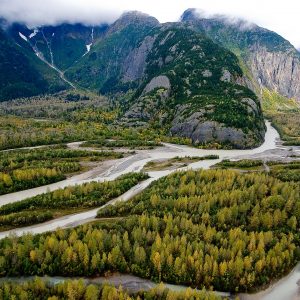The Stream, March 10: North Africa Water Scarcity “Urgent” Says FAO
The Global Rundown
A sharp decline in freshwater supplies across North Africa and the Middle East requires a “massive response,” according to the director of the Food and Agriculture Organization. Infrastructure across the United States, including water systems, received a D+ grade in a new report card. A water tanker strike in Chennai, the capital of Tamil Nadu, could disrupt its IT corridor. Tons of groundwater continue to flow into the damaged reactors at the Fukushima nuclear plant in Japan. Wildfires fueled by dry weather have burned thousands of hectares across the U.S. Plains. Researchers hope new studies will allow them to predict and monitor droughts much like hurricanes. Scientists studying streams and lakes call eDNA an increasingly critical tool for understanding aquatic ecosystems. Residents in Ethiopia’s growing towns say the government needs to do more to improve public water supplies. Americans purchased more bottled water than soda last year.
“There is no one to care about us.” –Worku Deme, a resident of Sululta, Ethiopia. Despite investment and economic growth in the region, including the construction of bottled water plants, residents say the government has done little to improve water systems for the public. (Guardian)
By The Numbers
150 metric tons Amount of groundwater still seeping into Japan’s damaged Fukushima nuclear power station each day. Officials want to eliminate contaminated water at the site by 2020, but decommissioning the plant has faced setbacks and could take decades. Guardian
809,380 hectares Area burned in Kansas, Oklahoma, and Texas this week as wildfires, fueled by dry weather, raced across the plains. Reuters
48.4 billion liters Amount of bottled water Americans purchased last year, beating out sales of soda by 1.5 billion liters. USA Today
Science, Studies, And Reports
Infrastructure in the United States earned a D+ grade in the 2017 report card issued by the American Society of Civil Engineers, the same grade that appeared in the previous report in 2013. Dams, drinking water systems, inland waterways, and levees all earned a D grade, while wastewater systems earned a D+. ASCE
In context: Learn why water systems across the United States need major makeovers.
The use of environmental DNA, or eDNA, is revolutionizing the way scientists study rivers, lakes, and other waterways. Collecting eDNA from water samples can inform researchers about the species that live there, and the tool is part of a U.S. Forest Service project to assess streams across the western United States. YaleEnvironment 360
In context: Learn how scientists use eDNA to track invasive Asian Carp in the Great Lakes region.
Droughts can move over time and should be monitored and forecast much like hurricanes, according to researchers at Princeton University. Their studied found that droughts can travel up to 3,100 kilometers, and that they follow patterns of movement within certain regions. Reuters
On The Radar
An “urgent and massive response” to water scarcity in North Africa and the Middle East is essential for the region’s food security and health, according to the director of the Food and Agriculture Organization of the Untied Nations. He said the region’s accessible fresh water has declined by two-thirds over the past four decades, while sea-level rise and competition between users pose additional threats to water supplies. FAO
Private water tankers have been on strike in Chennai, the capital of Tamil Nadu, for four days due to disagreements with government officials over their access to agricultural water. The tankers provide the majority of the water supply for the city’s IT corridor, and the strike could force offices to close. The New Indian Express
A news correspondent for Circle of Blue based out of Hawaii. She writes The Stream, Circle of Blue’s daily digest of international water news trends. Her interests include food security, ecology and the Great Lakes.
Contact Codi Kozacek




